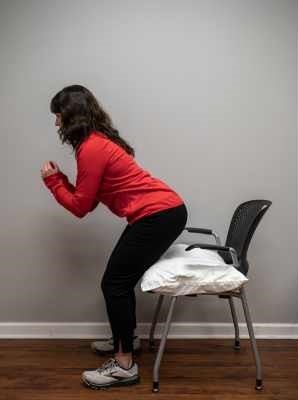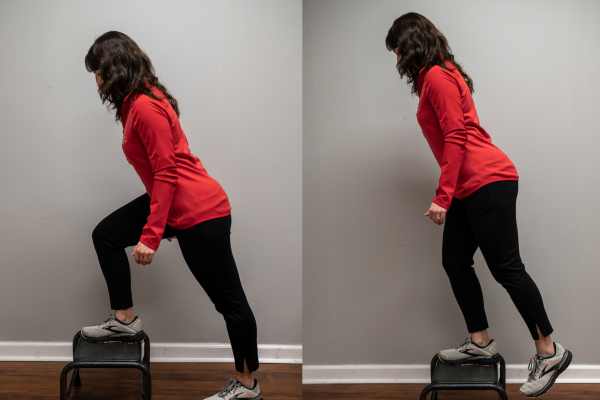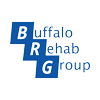Knee Pain: Life With a Degenerative Meniscus Tear
Knee pain is one of the most common ailments we see in our clinics.
When asked about how their pain starts, many patients respond, “I am not sure, it just seemed to start out of nowhere and progressively get worse.”
Does this sound familiar?
Knee pain, clicking, or cracking that gradually shows up over time may indicate that the cartilage or meniscus is wearing down. Keep reading to learn more.
The knee contains a medial (C-shaped) and lateral (O-shaped) menisci that sit on top of your shin bone or tibia.
The meniscus provides a cushion to the knee joint and plays an important role in how your knee moves and tolerates impact.
Some meniscus injuries are traumatic in nature, such as a fall, or a blow to the knee. However, a majority of meniscus tears occur from “wear and tear” over time.
Common complaints associated with a degenerative meniscus tear are knee pain, occasional clicking or catching of the knee, decreased range of motion, and difficulty climbing stairs, squatting, or kneeling.
Degenerative Meniscus Tear: Treatment Options
If you do have a meniscus tear and subsequent knee pain, there are a few options to consider for treatment.
Most people hear tear and immediately think, “I need surgery.” Most of the time, this isn’t the case.
With advancing medical science, we are learning that surgery may not be the most effective treatment for a meniscus tear. Physical Therapy is a leading treatment for a degenerative meniscus tear.
Therapy aims to treat the tear and reduce knee pain by taking pressure away from the injured tissue. It does this by providing the knee with a better support system (stronger and more flexible muscles at our hips, core, and ankles) through strengthening and balance exercises.
Should you require surgery, there are two general types. One is a meniscal repair where the doctor sews the meniscus back together. The other is called a meniscectomy, where the doctor cuts out the damaged meniscal portion. A partial meniscectomy is the most frequent orthopedic surgical procedure in the United States (1).
Movement is Medicine
Decreased lower extremity muscle strength at the hip and ankle has been linked as a risk factor for degenerative meniscal tears and the progression of the degeneration (2). Therefore, the stronger you are, the better your knee will function.
You want to find an exercise routine that is strenuous enough to improve strength, but not enough to cause strain on the knee joint itself.
The best place to start to improve your knee function and reduce knee pain is with repetitive, low-impact, and functional exercises.
Herrlin et al (3) completed a study in which they compared outcomes between a partial meniscectomy followed by an exercise plan and with an exercise plan alone. There is no significant difference between knee function, pain, or quality of life between the two groups. Meaning, patients who avoided surgery and performed exercises had the same outcome as those who underwent surgical management!
Another study revealed that those who chose to do exercises with a degenerative meniscus tear showed improvement in strength and reduction in joint breakdown over a two-year follow-up (4).
Where Should I Start?
While each exercise program will look different depending on your individual strength, prior level of function, and ultimate goals, some favorite exercises to improve knee health and function include squats and step-ups.
Squats, when performed properly, will improve hip, core, and lower extremity strength. Squats, however, can be painful for the knees if not performed properly.

To squat properly, you have to initiate movement through the hips. This will ensure that your knees do not translate forward over the toes.
To perfect your squatting form you can practice with a chair.
Stand about six inches in front of a chair and slowly push your hips back towards the chair and then lower down to the chair.
Complete ten to twenty repetitions two to three times per week to effectively improve your squatting ability.
Next, progress to step-ups.
Step-ups are a bit more difficult than squats. Step-ups will improve your strength and motion at the knee while also practicing a task that many of us need to do on a daily basis, but your form is key!

A common mistake made while doing step-ups is not making sure your whole foot is flat on the entire step. So, when you place your foot on the step to perform this exercise, make sure to place your whole foot on the step and press down through the whole foot, not just the heel. This will allow the muscles in both the front and back of the thigh to activate.
You can practice this for ten to twenty repetitions two to three times a week to help build strength in your legs.
Just because you are diagnosed with a degenerative meniscus tear does not always indicate a need to jump to surgery.
Physical Therapy and careful, progressive exercises may help to resolve your knee pain for good!
References
- Englund M, Guermazi A, Gale D, et al. Incidental meniscal findings on knee MRI in middle-aged and elderly persons. N Engl J Med. 2008;359:1108-1115.
- Stensrud S, Roos E, Riseberg MA. A 12-week exercise therapy program in middle-aged patients with degenerative meniscus tears: a case series with 1-year follow up. J Ortho S Phys Ther. 2012;42:919-931.
- Herrlin S, Hallander M, Wange P, et al. Arthroscopic or conservative treatment of degenerative medial meniscal tears: A prospective randomized trial. Knee Surg Sports Traumatol Arthrosc. 2007;15:393-401.
- Kise N, Riseberg MA, Stensrud S, et al. Exercise therapy versus arthroscopic partial meniscectomy for degenerative meniscal tear in middle age patients: randomized controlled trial with two-year follow-up. BMJ. 2016:1-9.
Want to feel and move your best?
Treatment is covered by insurance, no referral is needed to start, and with flexible virtual and in-clinic appointments available, you can find a time that works with your schedule.
Click the button below to get started.
